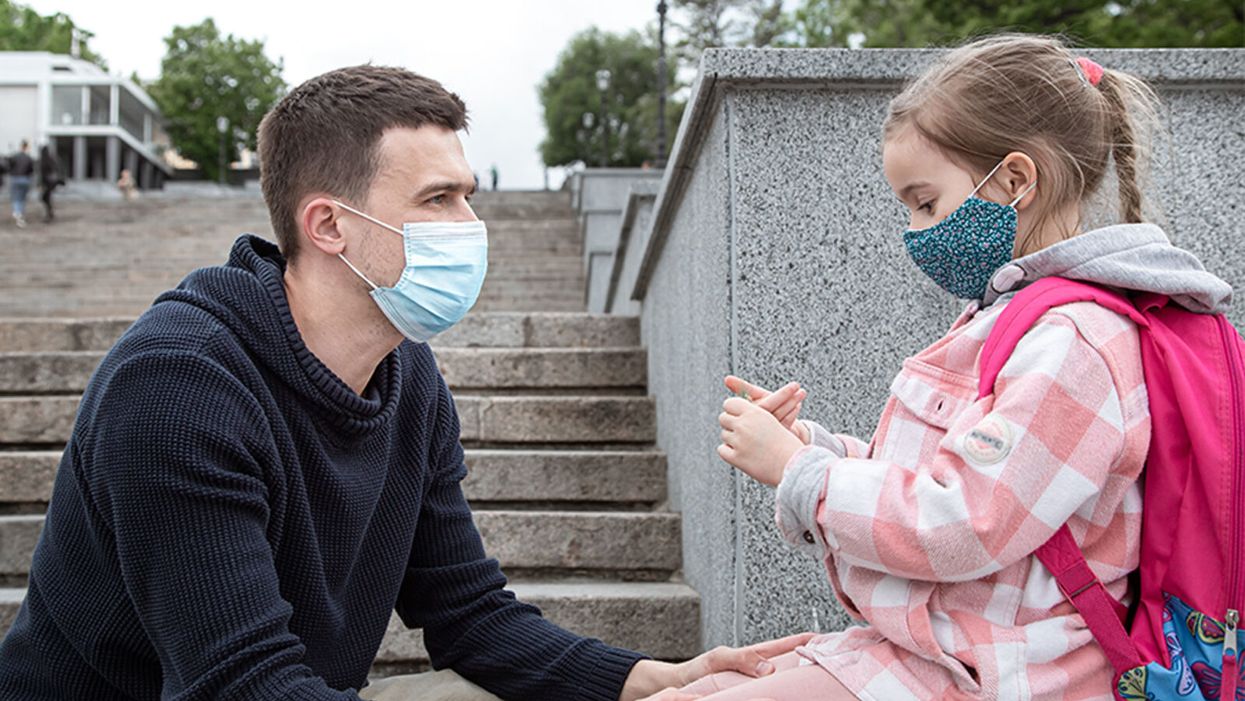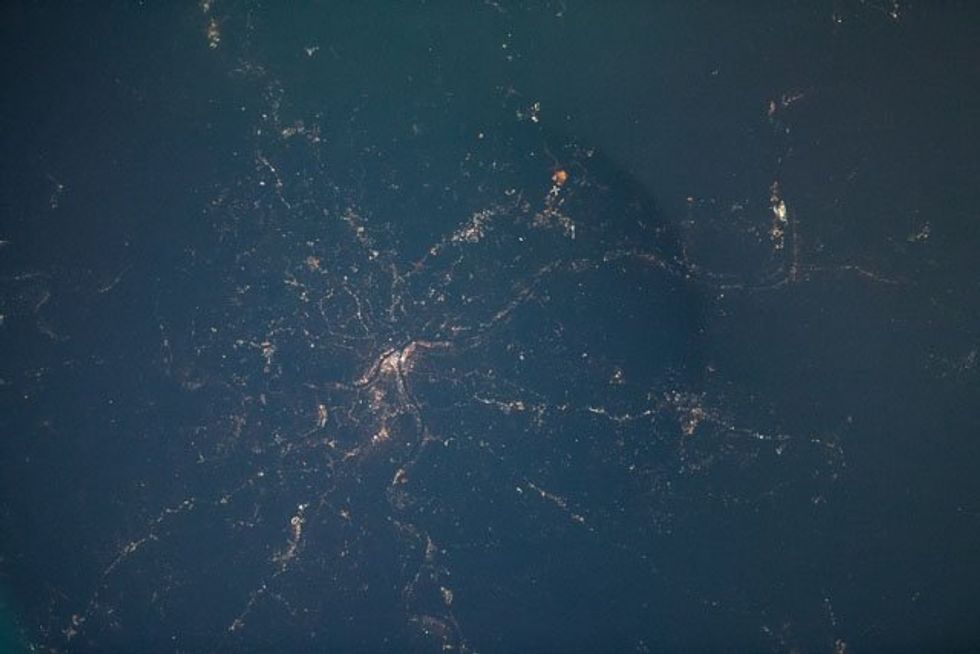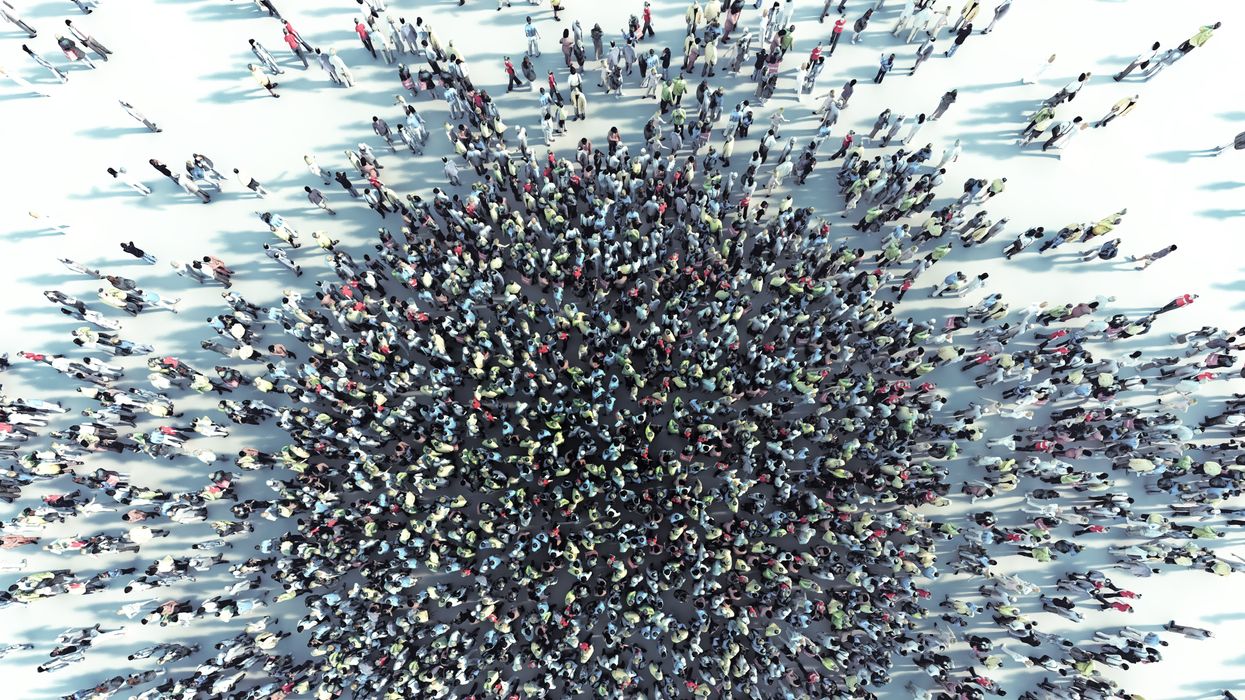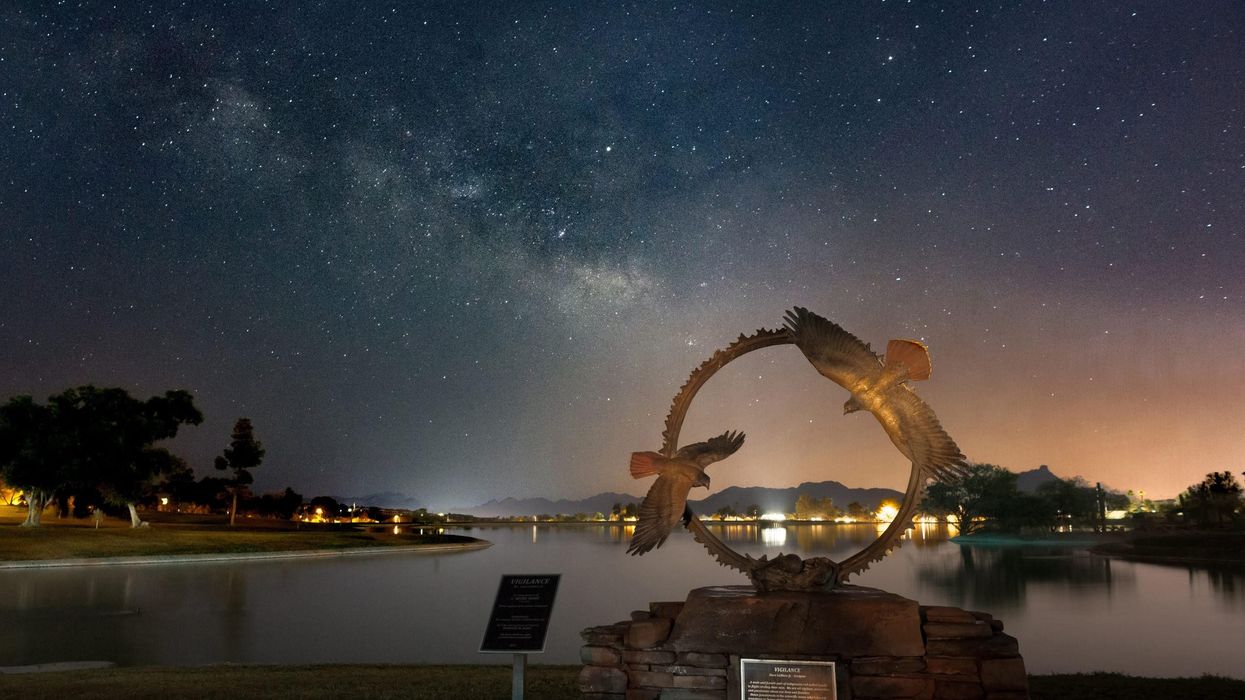5 Key Questions to Consider Before Sending Your Child Back to School

Consider community, school district policies, family health, risks/benefits, and necessity of schools before making the difficult decision.
[Editor's Note: This essay is in response to our current Big Question, which we posed to several experts: "Under what circumstances would you send a child back to school, given that the virus is not going away anytime soon?"]
It is August. The start date of school is quickly approaching. Decisions must be made about whether to send our children back. As a physician, a public health researcher, and the mother of two school-aged children, I have few clear answers.
To add insult to injury, a spate of recent new data suggests that - as many of us suspected all along - kids are susceptible to COVID-19, they transmit COVID-19, and they can get really sick from COVID-19.
Let me start with the obvious. My kids, and all kids, deserve a safe, in-person school year. We know the data on the adverse effects of school closure on kids, particularly for those who are already vulnerable. I also know, on a personal level, that distance learning is no substitute for in-person schooling. Homeschooling may be great for those with the privilege to do it, but I - like many Americans - am unable to quit my job, and children need more than a screen to learn.
Moreover, safe school reopening should not be an impossible dream. I and many other physicians, teachers, and scientists have described the bare minimum that we need to safely reopen schools: a stable, low rate of COVID-19 in the community; funding and mandates for basic public health precautions (like universal masking and small, stable classes) in the schools; and easy access to testing for kids and teachers. This has been achieved, successfully, in other countries.
Unfortunately, the United States has squandered its opportunity to do right by families. Across our country, rates of COVID-19 are rising. Few states have been able to sustain a test positivity rate of less than 5 percent - the maximum that most of us, in the public health world, would tolerate. Delays in testing are rampant. Systemic under-funding of public schools means that many schools simply can't afford to put basic public health measures in place. Worst, science denialism (and the spread of quack conspiracy theories online) means that many communities are fighting even the most basic of safety precautions.
To add insult to injury, a spate of recent new data suggests that - as many of us suspected all along - kids are susceptible to COVID-19, they transmit COVID-19, and they can get really sick from COVID-19. This data increases the risk calculus. Our kids are not immune, and neither are we.
Given that the necessary societal interventions simply have not happened, most American families are therefore left making an individual choice: do I send my kid to school? Or not? There are five key questions for parents to ponder when making the difficult choice about what to do.
First, we must look at our community. Knowing that testing is difficult to obtain, a true estimate of community prevalence of COVID-19 is nearly impossible. But with a test positivity rate of more than 5 percent, it's safe to assume that in a school of 500 people, at least 1 will be positive for COVID-19. That is too high for safety. Whether or not the local government does the right thing, I would not send my child to in-person school if my community had these high rates of test positivity.
Second, we must look at our school district's policies. Will the school mandate masks? Are they cohorting students and teachers in small, stable groups? Do they have contact tracing and isolation policies in place for when a student or teacher inevitably tests positive? Do they have procedures to protect vulnerable teachers and staff? If not, I would not send my child to school. If the district is doing all of the above, I would consider it.
Third, we must look at the health profile of our own kids and families. If my child had chronic medical issues, or if I lived with my elderly parents or were myself at high risk of severe disease, I would not send my child to in-person school.
It is therefore unlikely that schools anywhere in the U.S. will be open by October.
Fourth, we must do the difficult, ethical weighing of the non-zero risk of infection (even in the safest communities) with the needs of our children. Even in low-prevalence states, there will be infections in the school setting. That said, the small risk of a severe infection may be outweighed by the social, emotional, and financial risk of keeping a child home. This decision must be made on a family-by-family basis. I know my answer; but I cannot provide this answer for others.
Finally, we must call attention to the fact that many kids and families have no options. There are far too many American children who literally depend on their school system for physical, nutritional, emotional, and academic safety. There are too many parents who have no way to earn an income and keep their kids safe without in-person learning. If anyone deserves to be prioritized for in-person schooling, it should be them. (And yes, we should also work to fix the social safety net that leaves these children high and dry.)
As I write this on August 2nd, 2020, I am planning to send my two children back to our public schools for in-person education. We have low rates of infection in our community, we have masking and stable cohorts in place, and my family is relatively healthy. We also depend on the schools to keep my children safe and engaged while I'm working in the ER! I will not hesitate, however, to pull my children out of school should any of these considerations change, if local test positivity rates go up, or if my children report that masking is not the norm in the classroom.
And sadly, I expect that this discussion will soon be a moot point. We continue to fail as a nation at basic public health policies. It is therefore unlikely that schools anywhere in the U.S. will be open by October. Our country has not shown the willpower to control the virus, leaving us all with, literally, no choice to make.
[Editor's Note: Here's the other essay in the Back to School series: Masks and Distancing Won't Be Enough to Prevent School Outbreaks, Latest Science Suggests.]
In this week's Friday Five, attending sports events is linked to greater life satisfaction, AI can identify specific brain tumors in under 90 seconds, LSD - minus hallucinations - raises hopes for mental health, new research on the benefits of cold showers, and inspiring awe in your kids leads to behavior change.
The Friday Five covers five stories in research that you may have missed this week. There are plenty of controversies and troubling ethical issues in science – and we get into many of them in our online magazine – but this news roundup focuses on new scientific theories and progress to give you a therapeutic dose of inspiration headed into the weekend.
This episode includes an interview with Dr. Helen Keyes, Head of the School of Psychology and Sports Science at Anglia Ruskin University.
Listen on Apple | Listen on Spotify | Listen on Stitcher | Listen on Amazon | Listen on Google
- Attending sports events is linked to greater life satisfaction
- Identifying specific brain tumors in under 90 seconds with AI
- LSD - minus hallucinations - raises hopes for mental health
- New research on the benefits of cold showers
- Inspire awe in your kids and reap the benefits
Residents of Fountain Hills, a small town near Phoenix, Arizona, fought against the night sky pollution to restore their Milky Way skies.
As a graduate student in observational astronomy at the University of Arizona during the 1970s, Diane Turnshek remembers the starry skies above the Kitt Peak National Observatory on the Tucson outskirts. Back then, she could observe faint objects like nebulae, galaxies, and star clusters on most nights.
When Turnshek moved to Pittsburgh in 1981, she found it almost impossible to see a clear night sky because the city’s countless lights created a bright dome of light called skyglow. Over the next two decades, Turnshek almost forgot what a dark sky looked like. She witnessed pristine dark skies in their full glory again during a visit to the Mars Desert Research Station in Utah in early 2000s.
“I was shocked at how beautiful the dark skies were in the West. That is when I realized that most parts of the world have lost access to starry skies because of light pollution,” says Turnshek, an astronomer and lecturer at Carnegie Mellon University. In 2015, she became a dark sky advocate.
Light pollution is defined as the excessive or wasteful use of artificial light.
Light-emitting diodes (LEDs) -- which became commercially available in 2002 and rapidly gained popularity in offices, schools, and hospitals when their price dropped six years later — inadvertently fueled the surge in light pollution. As traditional light sources like halogen, fluorescent, mercury, and sodium vapor lamps have been phased out or banned, LEDs became the main source of lighting globally in 2019. Switching to LEDs has been lauded as a win-win decision. Not only are they cheap but they also consume a fraction of electricity compared to their traditional counterparts.
But as cheap LED installations became omnipresent, they increased light pollution. “People have been installing LEDs thinking they are making a positive change for the environment. But LEDs are a lot brighter than traditional light sources,” explains Ashley Wilson, director of conservation at the International Dark-Sky Association (IDA). “Despite being energy-efficient, they are increasing our energy consumption. No one expected this kind of backlash from switching to LEDs.”
Light pollution impacts the circadian rhythms of all living beings — the natural internal process that regulates the sleep–wake cycle.
Currently, more than 80 percent of the world lives under light-polluted skies. In the U.S. and Europe, that figure is above 99 percent.
According to the IDA, $3 billion worth of electricity is lost to skyglow every year in the U.S. alone — thanks to unnecessary and poorly designed outdoor lighting installations. Worse, the resulting light pollution has insidious impacts on humans and wildlife — in more ways than one.
Disrupting the brain’s clock
Light pollution impacts the circadian rhythms of all living beings—the natural internal process that regulates the sleep–wake cycle. Humans and other mammals have neurons in their retina called intrinsically photosensitive retinal ganglion cells (ipRGCs). These cells collect information about the visual world and directly influence the brain’s biological clock in the hypothalamus.
The ipRGCs are particularly sensitive to the blue light that LEDs emit at high levels, resulting in suppression of melatonin, a hormone that helps us sleep. A 2020 JAMA Psychiatry study detailed how teenagers who lived in areas with bright outdoor lighting at night went to bed late and slept less, which made them more prone to mood disorders and anxiety.
“Many people are skeptical when they are told something as ubiquitous as lights could have such profound impacts on public health,” says Gena Glickman, director of the Chronobiology, Light and Sleep Lab at Uniformed Services University. “But when the clock in our brains gets exposed to blue light at nighttime, it could result in a lot of negative consequences like impaired cognitive function and neuro-endocrine disturbances.”
In the last 12 years, several studies indicated that light pollution exposure is associated with obesity and diabetes in humans and animals alike. While researchers are still trying to understand the exact underlying mechanisms, they found that even one night of too much light exposure could negatively affect the metabolic system. Studies have linked light pollution to a higher risk of hormone-sensitive cancers like breast and prostate cancer. A 2017 study found that female nurses exposed to light pollution have a 14 percent higher risk of breast cancer. The World Health Organization (WHO) identified long-term night shiftwork as a probable cause of cancer.
“We ignore our biological need for a natural light and dark cycle. Our patterns of light exposure have consequently become different from what nature intended,” explains Glickman.
Circadian lighting systems, designed to match individuals’ circadian rhythms, might help. The Lighting Research Center at Rensselaer Polytechnic Institute developed LED light systems that mimic natural lighting fluxes, required for better sleep. In the morning the lights shine brightly as does the sun. After sunset, the system dims, once again mimicking nature, which boosts melatonin production. It can even be programmed to increase blue light indoors when clouds block sunlight’s path through windows. Studies have shown that such systems might help reduce sleep fragmentation and cognitive decline. People who spend most of their day indoors can benefit from such circadian mimics.

When Diane Turnshek moved to Pittsburgh, she found it almost impossible to see a clear night sky because the city’s countless lights created a bright dome of light called skyglow.
Diane Turnshek
Leading to better LEDs
Light pollution disrupts the travels of millions of migratory birds that begin their long-distance journeys after sunset but end up entrapped within the sky glow of cities, becoming disoriented. A 2017 study in Nature found that nocturnal pollinators like bees, moths, fireflies and bats visit 62 percent fewer plants in areas with artificial lights compared to dark areas.
“On an evolutionary timescale, LEDs have triggered huge changes in the Earth’s environment within a relative blink of an eye,” says Wilson, the director of IDA. “Plants and animals cannot adapt so fast. They have to fight to survive with their existing traits and abilities.”
But not all types of LEDs are inherently bad -- it all comes down to how much blue light they emit. During the day, the sun emits blue light waves. By sunset, red and orange light waves become predominant, stimulating melatonin production. LED’s artificial blue light, when shining at night, disrupts that. For some unknown reason, there are more bluer color LEDs made and sold.
“Communities install blue color temperature LEDs rather than redder color temperature LEDs because more of the blue ones are made; they are the status quo on the market,” says Michelle Wooten, an assistant professor of astronomy at the University of Alabama at Birmingham.
Most artificial outdoor light produced is wasted as human eyes do not use them to navigate their surroundings.
While astronomers and the IDA have been educating LED manufacturers about these nuances, policymakers struggle to keep up with the growing industry. But there are things they can do—such as requiring LEDs to include dimmers. “Most LED installations can be dimmed down. We need to make the dimmable drivers a mandatory requirement while selling LED lighting,” says Nancy Clanton, a lighting engineer, designer, and dark sky advocate.
Some lighting companies have been developing more sophisticated LED lights that help support melatonin production. Lighting engineers at Crossroads LLC and Nichia Corporation have been working on creating LEDs that produce more light in the red range. “We live in a wonderful age of technology that has given us these new LED designs which cut out blue wavelengths entirely for dark-sky friendly lighting purposes,” says Wooten.
Dimming the lights to see better
The IDA and advocates like Turnshek propose that communities turn off unnecessary outdoor lights. According to the Department of Energy, 99 percent of artificial outdoor light produced is wasted as human eyes do not use them to navigate their surroundings.
In recent years, major cities like Chicago, Austin, and Philadelphia adopted the “Lights Out” initiative encouraging communities to turn off unnecessary lights during birds’ peak migration seasons for 10 days at a time. “This poses an important question: if people can live without some lights for 10 days, why can’t they keep them turned off all year round,” says Wilson.
Most communities globally believe that keeping bright outdoor lights on all night increases security and prevents crime. But in her studies of street lights’ brightness levels in different parts of the US — from Alaska to California to Washington — Clanton found that people felt safe and could see clearly even at low or dim lighting levels.
Clanton and colleagues installed LEDs in a Seattle suburb that provided only 25 percent of lighting levels compared to what they used previously. The residents reported far better visibility because the new LEDs did not produce glare. “Visual contrast matters a lot more than lighting levels,” Clanton says. Additionally, motion sensor LEDs for outdoor lighting can go a long way in reducing light pollution.
Flipping a switch to preserve starry nights
Clanton has helped draft laws to reduce light pollution in at least 17 U.S. states. However, poor awareness of light pollution led to inadequate enforcement of these laws. Also, getting thousands of counties and municipalities within any state to comply with these regulations is a Herculean task, Turnshek points out.
Fountain Hills, a small town near Phoenix, Arizona, has rid itself of light pollution since 2018, thanks to the community's efforts to preserve dark skies.
Until LEDs became mainstream, Fountain Hills enjoyed starry skies despite its proximity to Phoenix. A mountain surrounding the town blocks most of the skyglow from the city.
“Light pollution became an issue in Fountain Hills over the years because we were not taking new LED technologies into account. Our town’s lighting code was antiquated and out-of-date,” says Vicky Derksen, a resident who is also a part of the Fountain Hills Dark Sky Association founded in 2017. “To preserve dark skies, we had to work with the entire town to update the local lighting code and convince residents to follow responsible outdoor lighting practices.”
Derksen and her team first tackled light pollution in the town center which has a faux fountain in the middle of a lake. “The iconic centerpiece, from which Fountain Hills got its name, had the wrong types of lighting fixtures, which created a lot of glare,” adds Derksen. They then replaced several other municipal lighting fixtures with dark-sky-friendly LEDs.
The results were awe-inspiring. After a long time, residents could see the Milky Way with crystal clear clarity. Star-gazing activities made a strong comeback across the town. But keeping light pollution low requires constant work.
Derksen and other residents regularly measure artificial light levels in
Fountain Hills. Currently, the only major source of light pollution is from extremely bright, illuminated signs which local businesses had installed in different parts of the town. While Derksen says it is an uphill battle to educate local businesses about light pollution, Fountain Hills residents are determined to protect their dark skies.
“When a river gets polluted, it can take several years before clean-up efforts see any tangible results,” says Derksen. “But the effects are immediate when you work toward reducing light pollution. All it requires is flipping a switch.”

